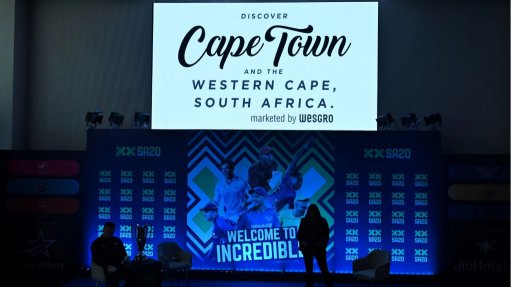New electrolyser technology 20% more efficient than counterparts, says Hysata
Australian electrolyser manufacturer Hysata has developed a new type of electrolyser, featuring what it says is the most efficient electrolysis cell in the world at 20% more efficient than its contemporaries, coupled with a simplified balance of plant.
The design of the Hysata system operates at 95% system efficiency, at 41.5 kW/kg, delivering a significant leap in performance over incumbent electrolysers, Hysata chief technology officer Professor Gerry Swiegers noted in a webinar on April 5.
He believes the innovative high-efficiency electrolyser will deliver the lowest-cost green hydrogen globally.
“For comparison, incumbent electrolyser technology is around 75% efficient with respect to the higher heating value of hydrogen, which means that around 25% of the renewable energy is wasted as heat. A typical commercial electrolyser today uses around 52.5 kW/kg,” he said.
These findings were validated in the Nature Communication journal in March last year, Hysata noted.
"It is important because efficiency is the biggest lever for getting to low-cost hydrogen, to reducing the levelised cost of hydrogen,” Sweiger said.
Hysata has developed a technology called capillary-fed electrolysis, wherein water is supplied to hydrogen- and oxygen-evolving electrodes by capillary-induced transport along a porous interelectrode separator, leading to inherently bubble-free operation at the electrodes.
This ultrahigh-efficiency stack, combined with a simplified balance of plant and focus on mass manufacturing from the outset could help to significantly reduce the cost of green hydrogen.
“The higher efficiency comes from multiple factors. Probably the biggest factor is the separator resistance, which has a very low resistance compared with conventional separators, but also by welding the anode to its bipolar plate, we were able to eliminate the contact resistance of the anode, which out to have quite a big effect,” Sweigers explained.
He further added that the elimination of gas bubbles ensured that the electrolyser catalyst surface is fully used.
“In a lot of electrolysers, a catalyst surface is not fully used. There are bubbles that just stay there forever, and which sit on the most active part of your catalyst. If you have no bubbles, then all of your catalyst is always in contact with the electrolyte and is always being used to its greatest effect,” Sweigers explained.
As a chemical catalysis and characterisation expert, Swiegers has worked in commercialisation as the inventor of 60 patent families – 366 individual patent applications – and the founder of seven startups, which have collectively received an estimated $100-million in investment.
He leads a team of scientists and engineers who are scaling up the electrolyser technology, which is attracting major customers and investors globally.
“We think that's going to lead to faster and cheaper decarbonisation of hard to abate industries, such as steel, chemicals, long-haul transport, shipping and aviation. It's projected that the demand for these electrolysers and for green hydrogen is going to reach about $50-billion a year by 2050.
“We've designed our system for net zero, for mass manufacturing and for rapid scaling and we're working very hard to remove any limitations,” Sweiger said.
Article Enquiry
Email Article
Save Article
Feedback
To advertise email advertising@creamermedia.co.za or click here
Comments
Press Office
Announcements
What's On
Subscribe to improve your user experience...
Option 1 (equivalent of R125 a month):
Receive a weekly copy of Creamer Media's Engineering News & Mining Weekly magazine
(print copy for those in South Africa and e-magazine for those outside of South Africa)
Receive daily email newsletters
Access to full search results
Access archive of magazine back copies
Access to Projects in Progress
Access to ONE Research Report of your choice in PDF format
Option 2 (equivalent of R375 a month):
All benefits from Option 1
PLUS
Access to Creamer Media's Research Channel Africa for ALL Research Reports, in PDF format, on various industrial and mining sectors
including Electricity; Water; Energy Transition; Hydrogen; Roads, Rail and Ports; Coal; Gold; Platinum; Battery Metals; etc.
Already a subscriber?
Forgotten your password?
Receive weekly copy of Creamer Media's Engineering News & Mining Weekly magazine (print copy for those in South Africa and e-magazine for those outside of South Africa)
➕
Recieve daily email newsletters
➕
Access to full search results
➕
Access archive of magazine back copies
➕
Access to Projects in Progress
➕
Access to ONE Research Report of your choice in PDF format
RESEARCH CHANNEL AFRICA
R4500 (equivalent of R375 a month)
SUBSCRIBEAll benefits from Option 1
➕
Access to Creamer Media's Research Channel Africa for ALL Research Reports on various industrial and mining sectors, in PDF format, including on:
Electricity
➕
Water
➕
Energy Transition
➕
Hydrogen
➕
Roads, Rail and Ports
➕
Coal
➕
Gold
➕
Platinum
➕
Battery Metals
➕
etc.
Receive all benefits from Option 1 or Option 2 delivered to numerous people at your company
➕
Multiple User names and Passwords for simultaneous log-ins
➕
Intranet integration access to all in your organisation


















